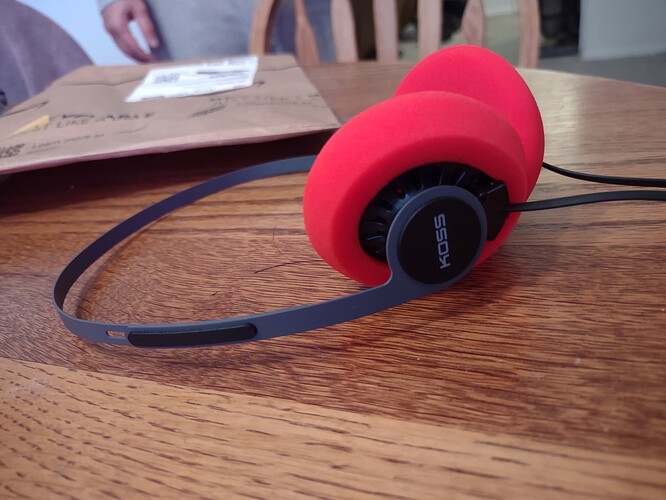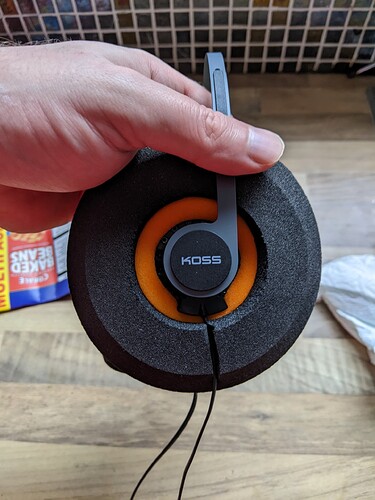
The KPH40 have been very kindly sent to me by Koss, along with the KEB90 and the utility cables. Today’s review is going to focus on the KPH40, both with and without the utility cable, and I will mention the IEMs in another independent review.
Koss have not requested anything specific, not even that I publish links. In fact, the utility series is not available yet in Europe, although Koss inform me that they will be available in the very near future and will be priced at 64.99€ for the KPH40, 89.99€ for the KEB90 and 69.99€ for the PortaPro Utility (which I don’t have at present).
The utility cables, which I will talk about also in this review, work with all the models and are available with both USB-C and Lightning connectors. These will be available at 49.99€.
More information about all of these can be found on the official Koss site here: Utility Series - Koss Stereophones
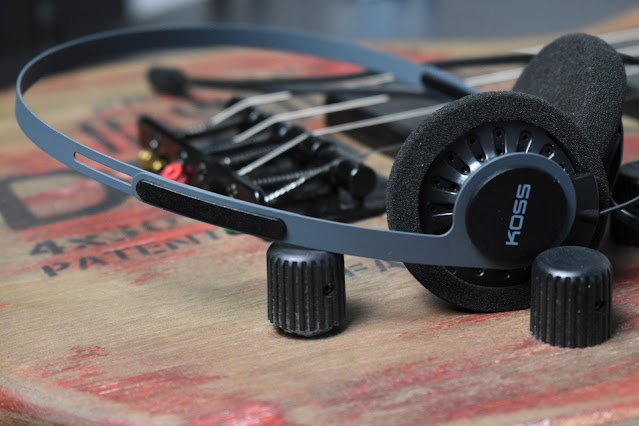
Intro…
I don’t think anyone who has spent any kind of time around headphones and earphones can have done so without the brand Koss appearing on the radar. Even my father, who is not a headphone fan, had a set of PortaPros for a long time, long before I became seriously interested in headphones.
In my case, although I have many options to choose from, I have to say that Koss are still the brand that sees the most ear time. I basically have a set of PortaPro’s, KSC75’s (with PP headband) or KPH30i at each position where I spend any amount of time. Most of them are connected to Apple dongles, making them my “quick grab” headphones for simple media consumption and, more importantly, long conference calls where I need to wear them for hours and hours without a break.
They also spend a lot of time on my head between calls, just for listening to music without having to swap headphones, offering a very enjoyable sound that I would say is very impressive for their price range.
Anyway, you can see my full reviews of the PortaPro, KSC75 & KPH30i (by clicking on any of them). The focus today is on the KPH40, part of the new “Utility” series, which I find is quite an announcement as it is a new addition to this style of headphones from Koss, joining the other models that have been around for 5 years, in the case of the KPH30i, or decades in the case of the PortaPro.
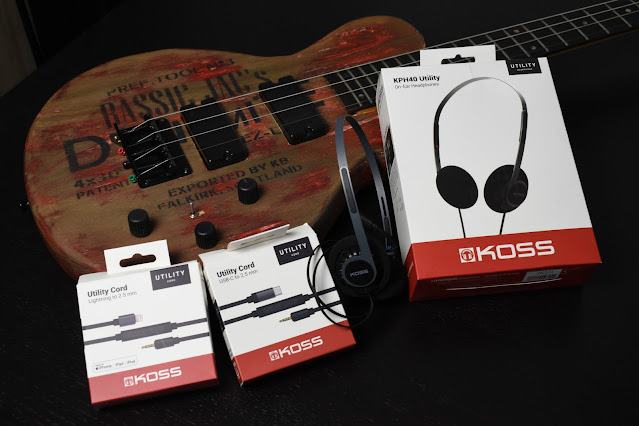
Presentation…
The presentation has not changed, it still follows the simple packaging that Koss uses on most (all?) of their headphones/earphones. It is a simple white box, with an image of the KPH40 shown on the cover, with some other basic info distributed around the box.
Inside we receive the KPH40 well fixed in place and well protected for shipping, along with the normal 3.5mm cable. Yes, Koss have actually added detachable cables to the “utility” series, which is great, even if it is a little different to what people may expect when they hear “detachable cable”, but then again, Koss have proved continuously over the years that they like to do things their own way.
The Utility cable is shipped separately as it is a separate purchase. This is again packed in a similar fashion, with simple packaging and good shipping protection.
Basically, Koss ships their Utility series (as with other series headphones) in packaging that is meant to protect the item during shipping and then be recycled as soon as they have been opened. This is great in my opinion, keeping the packaging costs down, along with reducing the use of plastics in the packaging.
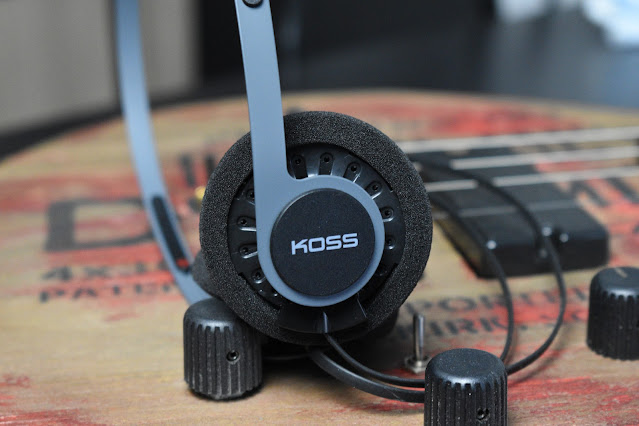
Build and aesthetics…
I also leave my impressions of comfort under the “Build and aesthetics” section and this time I just need to say one thing…
These are the most comfortable headphones/earphones I have ever worn!
Yes, they are that comfortable.
The minimalist headband is extremely lightweight, the drivers are small and there is plenty of adjustment for each person’s ears. I sometimes forget I am wearing PortaPros and sit with them on my head for extended periods without anything playing, that is how comfortable the PortaPros are, well the KPH40 just increased the comfort level by quite a significant amount.
I know that comfort is a very personal thing but I have actually put the KPH40 on the heads of multiple people and every one of them said “it’s like wearing nothing”.
As far as build quality, I have never been very inspired by Koss build, yet I have never had an issue either, so I cannot complain about them. In the case of the KPH40, the build is still very simple but the headband is a definite step up, at least it seems to be. A very simple metal band has been used, with an adjustment system on the sides, similar to the KPH30i system but with metal parts that inspire far more confidence.
The look of the headband is also great in my opinion. I mean, it is difficult to make a thin metal band into anything interesting but the colour used and the logos etc. do a good job of giving it a bit more of a well built and modern style.
The pads are also a step up from previous models, being slightly thicker and more comfortable. The only other Koss model I have that still wears stock pads is a set of KSC75’s that I have for reference and I find that the KPH40 pads are much nicer.
The cable, which is detachable from the point where the cable splits, is a flat cable and I actually quite like it. It feels good, is not microphonic and it works as its intended. Ok, it is not a boutique cable, but I would say it is certainly a huge step above the older series cables.
I will talk more about the cable in the functionality section but just so we are clear, the KPH40 has a cable that is fixed at each driver (non-removable) but then has a female connector where the split would be on a normal cable. Included in the box is a simple 3.5mm TRS to 2.5mm TRRS cable, this cable can be swapped out for the Utility cable, but again, I will discuss this more in a second.
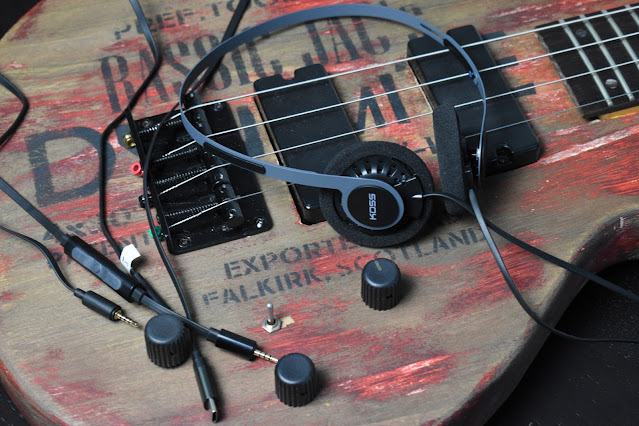
Functionality…
I know that a “functionality” section in a simple headphone review is not a usual occurrence, but I need to mention a little about the Utility cable, which is a very important aspect of this series, in my opinion.
As I just mentioned, Koss have used a system that allows the bottom half of the cable to be swapped out. This allows the included 3.5mm terminated cable to be swapped out for a Utility cable, terminated in USB-C or Lightning, which contains a microphone and a DAC inside the cable.
As I also mentioned, I keep quite a few pairs of Koss around with Apple dongles on them, allowing me to plug them into almost anything, giving me a decent listening and communication headset. The addition of the Utility cable basically does the same thing.
Where the Utility cable differs from something like the Apple dongle is that it has an inline microphone built in, along with some basic controls like vol+/vol-, play/pause etc. These controls are simple rubber rockers that have a robust feeling to them and work fine on both Android and PC. The inline microphone is also of good enough quality to be used for calls without any complaints. I spend quite a bit of time on calls and using the KHP40 during the past week or so has not brought me any complaints from others at all.
The female connector that is mounted on the fixed part of the KPH40 cable is a female TRRS, which actually allows the headphones to be run balanced. However, the pinout is not a standard pinout, so anyone making DIY cables for this will need to do some investigation first. I have no idea if Koss plans to release a balanced cable for the Utility series but to be totally honest, I can’t see the need for running these headphones balanced (although that doesn’t mean that a bunch of people wouldn’t buy a balanced cable if available).
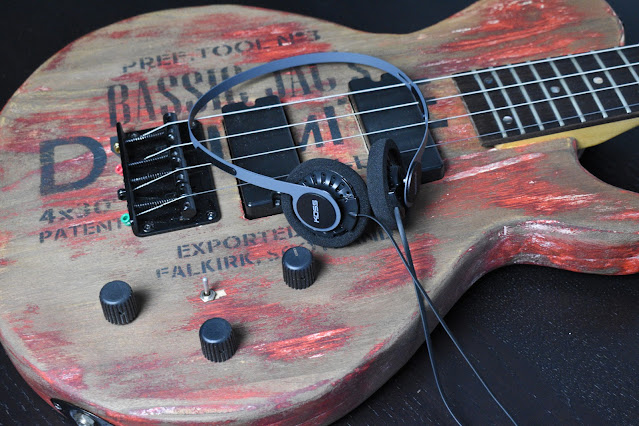
Sound…
(note that any songs that I mention in this review are clickable links, as always, which allow you to listen to the song on the streaming platform of your choice)
Let me start by saying that I have done some A/B testing back and forth between using the Koss Utility (USB-C) cable and the normal 3.5mm included cable with the Apple dongle, and I really can’t tell the difference. There are occasions when I think I do but then I swap over and I am no longer convinced. There is no way that I would differentiate between them in a blind test.
This is a high compliment in my opinion as the Apple dongle is a pretty good DAC and rivals other dongles costing 10 times as much. The Utility cable not being a step down means that it is also a decent sounding DAC and does justice to the headphones. Also, the fact that I can’t tell the difference is a sign that no DSP correction has been used in the Utility cable, so it is not an “obligatory” purchase like it is with some other brands that I won’t name.
So, my impressions have been with both setups, along with running it from my usual set ups, although the majority of use has been with the Utility cable.
I will also mention that all of my Koss models are currently wearing Yaxi Pads and have been for quite some time. This means that my current impressions of those models are using Yaxi pads, which is maybe not an apples to apples comparison. However, all of my reviews have been with stock pads, before trying out the Yaxi pads, so it is only fair that the KPH40 gets reviewed in the same way. I will be giving the Yaxi pads a try once I have finished this review and will post a quick update in the near future if I feel that they change things enough to be relevant (which they did on all the previous models I have tried them on).
Anyway, on to the sound…
The subbass region is rolled off, as is to be expected. These are small on-ear headphones, it would be quite a feat if they pulled off a huge amount of subbass. Putting them through the usual subbass stress test, they do sound noticeably rolled off but I will say that they still manage to sound clean. Many times, when pushing a driver to reproduce frequencies that are not in the zone that it is designed to reproduce, will result in a sound that is stressed and will cause no end of distortions and issues. Just try boosting 40Hz on a normal bookshelf speaker and then turn it up, it won’t sound good. However, the KPH don’t fall apart even when pushed. I turned the volume way above my usual listening levels and was surprised that “Chameleon” didn’t make them suffer.
The midbass is more present and actually is partly responsible for the warmth that the general sound signature presents. I would definitely say that the general signature is aimed more towards the PortaPro than the KSC75, with more warmth and less upper registry focus. This works well with a lot of electric bass and guitar, giving a nice warm low end to rock and other electric focused styles.
However, the bass does not seem to be as detailed or as focused in relation to other mentioned Koss models. The bass seems to be a little smoothed over and while this can work well for BGM listening, I found that I was missing detail once I paid attention.
The transition into the lower mids is not bloaty or muddy, but it does follow that slight warm sound with a little lack of detail. For example, “Give Me One Reason” by Tracy Chapman, sounds great while listening to her on the KPH40, with a nice timbre to the guitar, however, “Killing in the Name” doesn’t fare so well.
The midrange is fairly balanced but I do find that on certain songs, vocals can take a step back when there is a lot going on. This is not a regular occurrence but I have noticed it on certain songs, such as “Killing in the Name” I just mentioned.
For the majority of simple acoustic & vocal based music I listen to, I can not complain, the KPH40 do a nice job of presenting the music in a relaxed and smooth manner, yet there are certain songs that just sound a little muffled to me in the vocal range, “Whole Lotta Love” being an example.
Moving into the higher end of the midrange, again, the presence is good on a great majority of music, but I do find certain songs, or certain artists, getting a little lost in the mix. This is something that seemed to stand out more on tracks that have multiple electric guitars, it seems that the guitars just get pushed forwards a little bit more than the vocals.
Heading up into the higher registries, there is no sibilance to speak of when using the usual “Code Cool” test, however, there is a peak somewhere around the 5kHz mark that can sometimes come across a little harsh. I am wondering if this frequency peak has anything to do with the additional presence of guitars vs vocals, however, without some exact measurements and EQ, I will continue to wonder for now.
The highest frequencies do not extend as far as they could, or rather, I feel that the sound signature of the KPH40 takes away from the sensation of air and extension. It’s not that there is no treble, the treble is there, it is just masked slightly by the overall tuning.
Soundstage is as good as it is on any of the other Koss models I have had the pleasure of trying. It is not the widest soundstage in the world but does have enough space to breathe and while I would consider it more on the “intimate” side of things, it does not feel closed in. The placement of images inside the stage is also acceptable. Layers are nicely identifiable if paying attention but the details do not jump out and grab you, they are not attention seekers.
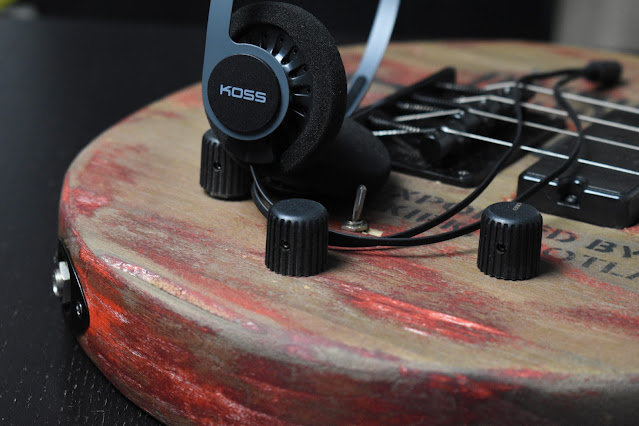
Conclusion…
I feel there is a lot of good in the KPH40, although there are also a couple of things that don’t quite convince me, mostly in regards to sound, more specifically, sound with certain music.
As far as build, these actually feel like a step up from other models, with a comfort that really is second to none. I would not complain if I had to wear these on my head for 16 hours per day. They are a great set of headphones for the office and I would highly recommend them to anyone needing to wear headphones all day (such as call centres). The mic is also decent. I thought it might suffer by being further away from the mouth than on other models, but that has not been the case.
The utility cable is a very good idea and while it may not be the way that we would have expected, I have no complaints about the quality or functionality of the system. In fact, I have no complaints about the KPH40 with regards to quality.
If there is anywhere that I am not 100% sold, it is in the sound category. Now, I am not saying that the KPH40 are not a good set of headphones for the price, they most certainly are, however, they are up against some tough competition from themselves.
In regards to my favourite sound from the Koss models I have been mentioning throughout the review, my ranking is KSC75 (on PortaPro headband) > KPH30i > PortaPro.
That is obviously a very subjective opinion, one that is not shared by a huge amount of people who would probably rank them the other way, but that is how my preferences go.
In the case of the KPH40, I would place them between the KPH30i and the PortaPro, strictly on sound terms only. This is also very dependent on music, where some heavy rock will drop my preference for them, some acoustic & vocal music will quickly bring them back up.
If talking about build, comfort, etc., then I would easily rank the KPH40 above any of those three.
I have no doubt that the KPH40 will see a lot of use, as with all the Koss models I own, and I am now excited to see what changes Yaxi may bring.
As always, this review is also available in Spanish on my blog (here) and on YouTube (here)
